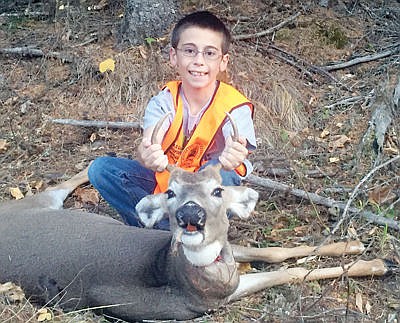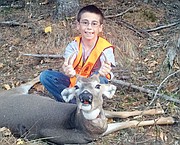Hunting: An annual tradition returns to Montana
An estimated 100,000 people will don their orange attire, pull on their boots, shoulder their rifles and take to the hills in the pursuit of big game tomorrow as Montana’s general rifle season for deer and elk officially opens. The general season for deer and elk runs from Oct. 24 until Nov. 29, although seasons for other big game animals such as bear, moose, bighorn sheep and mountain goat began Sept. 15.
The tradition of hunting, in addition to bringing together family and friends, generates an estimated $287 million for Montana’s economy, money that is spent in restaurants, hotels and motels, outfitters, roadhouses, sporting goods stores and other businesses.
“It’s not an exaggeration to say that this is a big, big deal in Montana,” said Montana Fish, Wildlife & Parks director Jeff Hagener. “I’ve been in this job awhile now and I’m always reminded of just how important hunting is to the people who live, work and vacation here. We Montanans talk and debate and laugh and argue about it all year long because we’re passionate about these special Montana opportunities that can be found in few places these days. In Montana, hunting is bigger than just a hobby or recreational diversion, it’s really a celebration of our culture and our history – and we look forward to it year after year.”
Fish, Wildlife & Parks biologists have forecast a good hunting season for elk in Region One, which encompasses northwest Montana. The department issued a forecast Oct. 21.
“Several mild winters have helped with elk calf survival and recruitment,” the statement read. “Elk populations in many areas in northwest Montana, where steep terrain and heavy forest cover pose considerable challenges to hunters, are stable to increasing.”
Biologists were not as positive about the population expectations for mule deer.
“Mule deer populations remain low, but among those hunters willing to put in the time and effort, it’s clearly still possible to harvest a mature ‘trophy class’ buck in some remote areas,” the release read.
Expanding populations, on the mend from harsh 2007 and 2008 winters, are leading to good projections for white-tailed deer hunting.
“It’s a different story for white-tailed deer,” according to the department’s report. “Region-wide hunters can expect to find more white-tailed deer and an increase in the number of bucks over three years old, as populations continue to rebound from severe winter mortality in 2007 and 2008.”
FWP officials cautioned hunters to follow all regulations as posted. Agency officials said hunters must remember to honor private property boundaries and to not shoot from the road. Wardens cite a handful of violators each year for those types of infractions. They also cautioned hunters to make sure to leave evidence of any harvested animal’s sex intact and to check in at all big game check stations. Checking in is required, even in the event no game has been harvested.
The hot and dry summer, which led to a record-level fire season earlier this year, continues to pose a concern for officials.
“Well, first of all, it’s really a lot drier than people think,” said FWP spokesman John Fraley. “Even if we get a little rain the latent dryness of the woods is incredible. It’s very dry out there, so you want to be very careful with any kind of fire that you build. When you park your vehicle, don’t park it on dry grass, things like that.”






